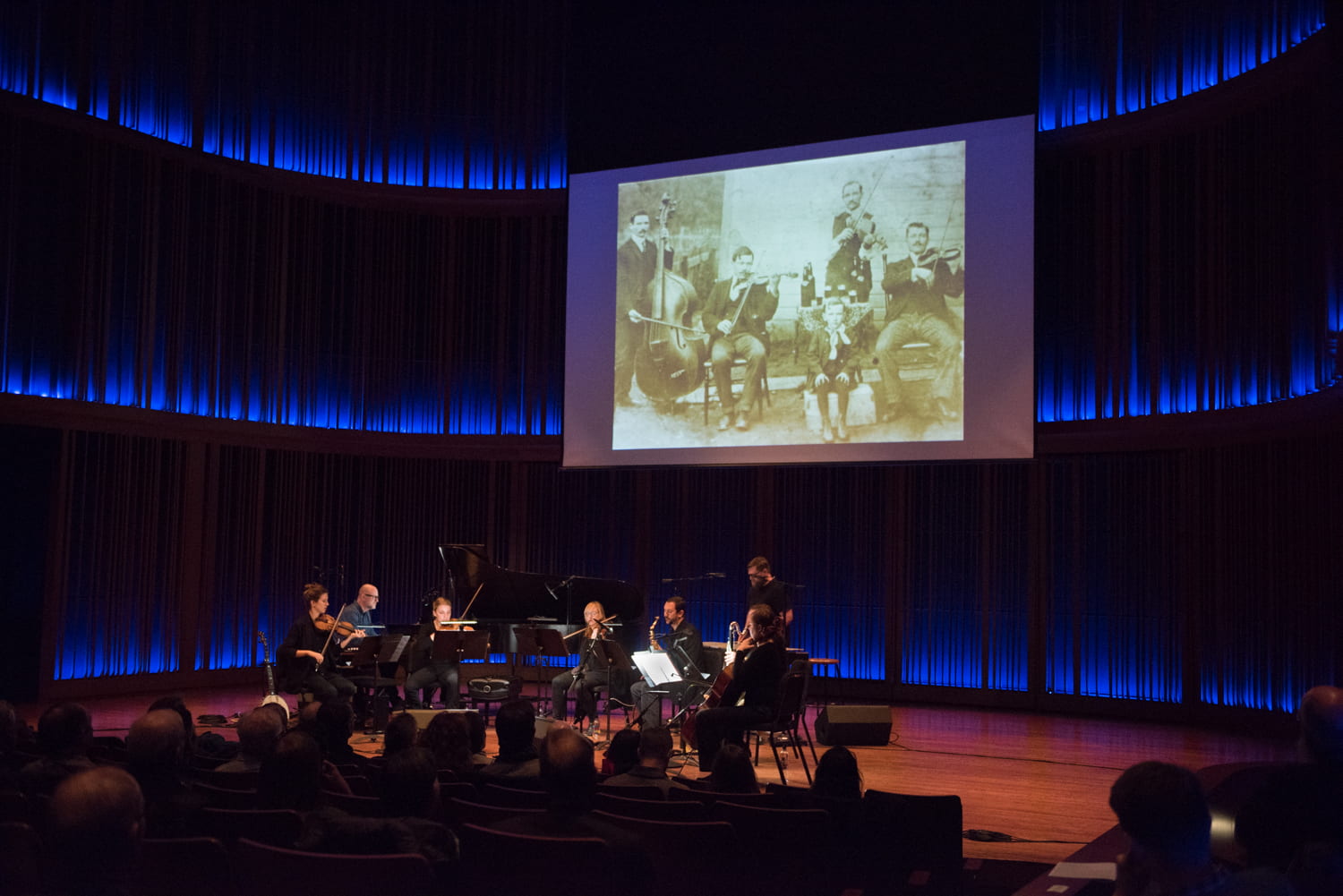
Brian Harnetty and band performing “Shawnee, Ohio” for his Live Liquid Music Series. Credit: Courtesy of Brian Harnetty and Wexner Center of the Arts
After over a decade in the making, musician Brian Harnetty is ready to show the world his visual project, which explores and navigates the history and town of Shawnee, Ohio in the Appalachian region.
Brian Harnetty, a Columbus-born musical artist, brings a visual project for his musical album “Shawnee, Ohio,” which has been in the works for the past 11 years, to the Wexner Center for the Arts. The project showcases the mining town of Shawnee, Ohio, and its residents, and it will be viewable online for two weeks, starting with the premiere and live Q&A Tuesday at 5 p.m.
“This is a new version or iteration of the project, and I’ve turned it into a 60-minute film with archival images and video and contemporary images and video, and all of the music together, and I think it works really well,” Harnetty said. “I really like how the viewer can get really immersed in the world of both the music and the images, and it feels a little bit like a documentary, but on the experimental side, so somewhere in between that and watching a music video.”
Harnetty said he became interested in the specific Appalachian town because of his ancestral ties to the region and the complex history of the community.
“I don’t identify as Appalachian, but both my father’s and mother’s families are from Appalachian Ohio,” Harnetty said. “And so my maternal grandfather was from Shawnee. So, I have an ‘insider outsider’ status that has allowed me to have an introduction and talk to people, but I still am a bit of an outsider too, so my connection is through family.”
Even with Harnetty’s connection to the town of Shawnee, he said he was also interested in the general community and dynamic of this area and its mining culture.
The project details 11 residents from Shawnee and other small surrounding towns who talk about their lives and experiences residing in a town with mining culture and how this culture has impacted their lives, Harnetty said.
“It started a decade ago where I began doing ethnographic research in the region, focusing on sound,” Harnetty said. “Then in 2016, we created a live performance piece including those residents, which depicts in that [visual piece] two centuries of extraction in the region, booms and bust cycles, the towns and the people, as well as mining labor disasters. So those are the themes that we explored, and we took that on tour and performed it in many places.”
Although this piece is about a specific town in Ohio, Harnetty said the themes and issues explored throughout the short film can be applied to issues faced by a multitude of communities.
“In this moment where there’s a lot of anxiety over energy and energy use and extraction, certainly with the events in Texas, for example, over the past three weeks, I think that this project enters into that conversation, but through a human lens,” Harnetty said. “It shows the very complex situation around extraction and its long history of booms and busts, and yet at the same time, it offers a very personal intimate portrait of different residents that lived there.”
This project was co-commissioned by the Wexner Center in 2016 and involved Ashley Stanton, a senior producer for the Performing Arts Department at the Wexner Center. Stanton said this project is reflective of the current ways artists are innovating during the pandemic because live performances have been impossible.
“This sort of reworking of it kind of speaks to the situation that we’re all in with the pandemic and everything and just how various performing artists are really innovating in these really creative, beautiful ways to still showcase their art while we’re not able to all be together live,” Stanton said.
Stanton said this free program has also been made more accessible for those at home by not requiring registration and including closed captions.
Stanton said the project has relevance for people from all walks of life, despite its focus on small-town life.
“The piece is so accessible because it’s related to the everyday lives of these people so, you know, I think just feeling the work will be instructive in that regard,” Stanton said.
Harnetty said this visual project encourages viewers to think about the issues mining has brought to rural towns.
“I think that watching this is a really affecting experience. It sort of touches you emotionally and then leads you to larger questions about rural versus urban communities, about the issues of extraction and boom and bust culture and cycles,” Harnetty said. “And then also how we should use the land in the future. And how can we find ways to get it to recover and then also to help the people in those communities to recover economically as well?”
The live streaming of the visual project for “Shawnee, Ohio” will take place on the website for the Wexner Center. Following the live stream will be a live Q&A with Brian Harnetty, Shawnee Mayor Beverly Trovato and community member John Winnenberg, who will discuss the project and the town of Shawnee.


